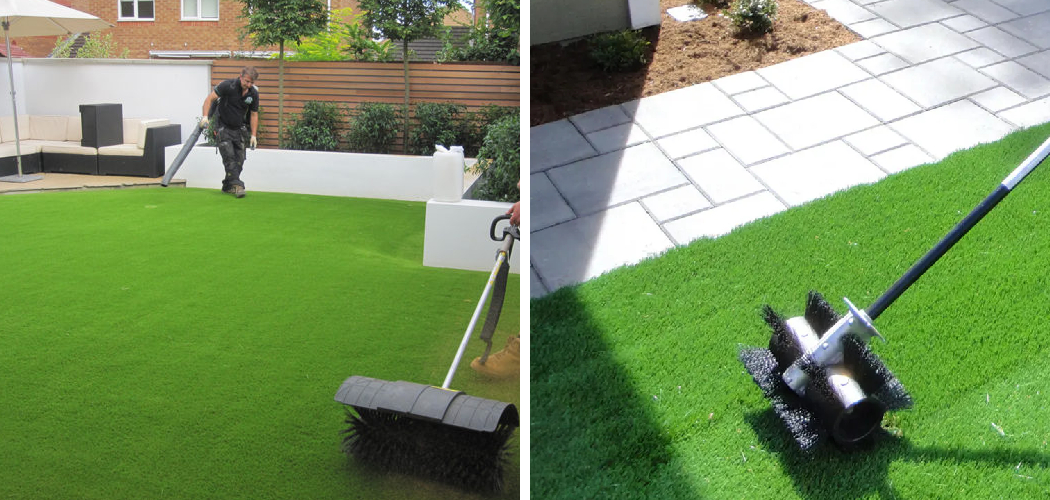To take care of turf grass, regularly mow it at the appropriate height and water it deeply but infrequently. Additionally, fertilize the turf grass based on its specific needs and address any pest or disease issues promptly.
Introducing proper care and maintenance for turf grass to ensure it thrives and remains lush can be achieved through some simple practices. By regularly mowing the grass at the appropriate height, ensuring it is watered deeply but infrequently, and addressing any pest or disease issues promptly, its overall health can be maintained.
Additionally, providing the grass with the necessary nutrients through proper fertilization will contribute to its growth and vibrancy. This article will delve into the step-by-step process of caring for turf grass to help homeowners and gardeners achieve and maintain a beautiful and healthy lawn.
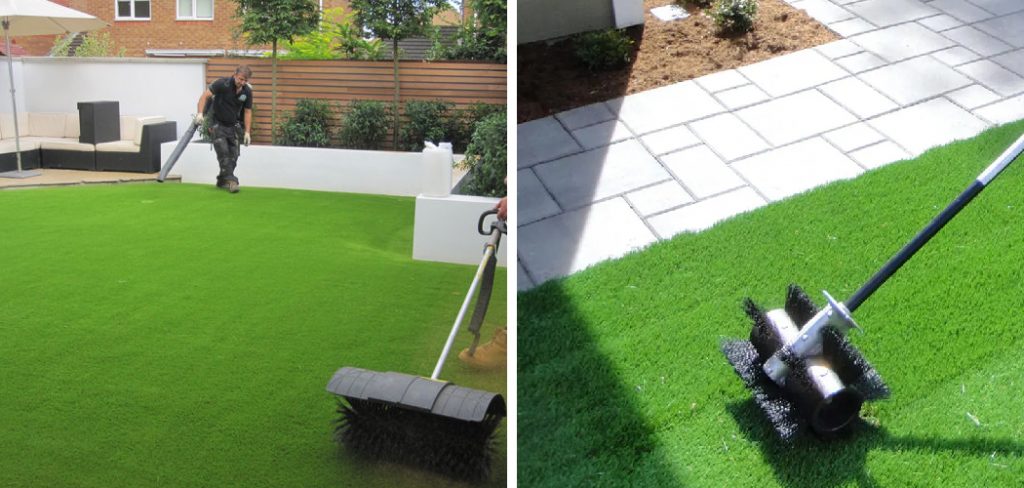
Factors To Consider When Selecting Turf Grass
Factors to consider when selecting turf grass include climate and weather conditions, soil type and ph levels, sunlight requirements, drought tolerance, and traffic and wear resistance. The climate and weather conditions in your area will determine which turf grass varieties are best suited for your lawn.
It is important to choose a type of grass that can withstand the temperature extremes and precipitation patterns in your region. Additionally, soil type and ph levels play a crucial role in the health and growth of turf grass. Certain grass varieties thrive better in acidic or alkaline soil, so it is essential to assess your soil composition before making a selection.
Moreover, sunlight requirements should also be taken into account. Some turf grass varieties need full sun exposure, while others can tolerate shade or partial shade. Furthermore, drought tolerance is crucial, especially in areas prone to dry spells. Choosing a turf grass that can withstand periods of limited water availability will ensure a resilient and attractive lawn.
Lastly, consider the amount of traffic and wear your lawn will experience. If you have kids or pets, select a turf grass variety that can withstand frequent use without showing signs of wear and tear. Taking these factors into consideration will help you make an informed decision when selecting turf grass for your lawn.
Popular Types Of Turf Grass
Popular types of turf grass include bermuda grass, zoysia grass, kentucky bluegrass, st. augustine grass, and fescue grass. These grasses each have unique characteristics that make them suitable for different climates and soil types. Bermuda grass is drought-tolerant and grows well in warm climates, while zoysia grass is known for its ability to withstand heavy foot traffic.
Kentucky bluegrass is a popular choice for cooler climates and has a beautiful, lush appearance. St. augustine grass thrives in warm, humid regions, and fescue grass is well-suited for shaded areas. Proper care and maintenance are essential for keeping turf grass healthy, including regular watering, fertilizing, mowing, and weed control.
Understanding the specific needs of each type of turf grass is crucial for achieving a beautiful and thriving lawn.
Evaluating The Existing Soil
Evaluating the existing soil is crucial in taking care of turf grass. Soil testing helps identify its health. Ph adjustment is important to ensure the soil’s acidity or alkalinity is suitable. Nutrient analysis determines the soil’s fertility and helps provide the necessary elements for the grass.
Understanding the soil’s composition allows for targeted care. Assessing its ph levels and nutrient content aids in achieving optimum conditions for the turf grass. With proper evaluation and adjustments, the grass can thrive and maintain its lush and healthy appearance.
Regular soil testing and adjustments are essential for long-term turf grass care.
Soil Preparation Techniques
Soil preparation techniques are crucial for maintaining healthy turf grass. Clearing the area from weeds and debris is the first step toward creating a suitable growing environment. Remove any unwanted plants and ensure the surface is clean. Next, focus on leveling and grading the soil to provide an even surface for the turf.
This helps prevent water pooling and uneven growth. Improving drainage is essential to avoid waterlogged areas, which can lead to turf damage. Consider creating slopes or installing drainage systems if needed. Lastly, apply organic matter or soil amendments to enhance the soil’s fertility and structure.
This adds valuable nutrients and improves the overall health of the turf. By following these soil preparation techniques, you can ensure optimal growth and longevity for your turf grass.
Sodding Vs. Seeding: Which Method Is Best?
Sodding and seeding are both methods used for taking care of turf grass. Sodding involves laying down pre-grown grass rolls on the ground, providing an instant lawn. On the other hand, seeding involves planting grass seeds and waiting for them to grow.
The pros of sodding include quick results, immediate use of the lawn, and low maintenance. However, it can be more expensive and limited in grass selection. Seeding, on the other hand, is more affordable, allows for customization, and can fill in bare spots.
However, it takes longer for the grass to establish and requires more maintenance. To determine the right method for your situation, consider factors like budget, time, and desired outcome. By weighing the pros and cons, you can make an informed decision to take care of your turf grass effectively.
Step-By-Step Turf Grass Installation Process
Turf grass is a beautiful addition to any yard, but taking care of it requires some effort. Start by measuring the area where you want to install the turf grass. This will help you determine how much sod or seed you will need.
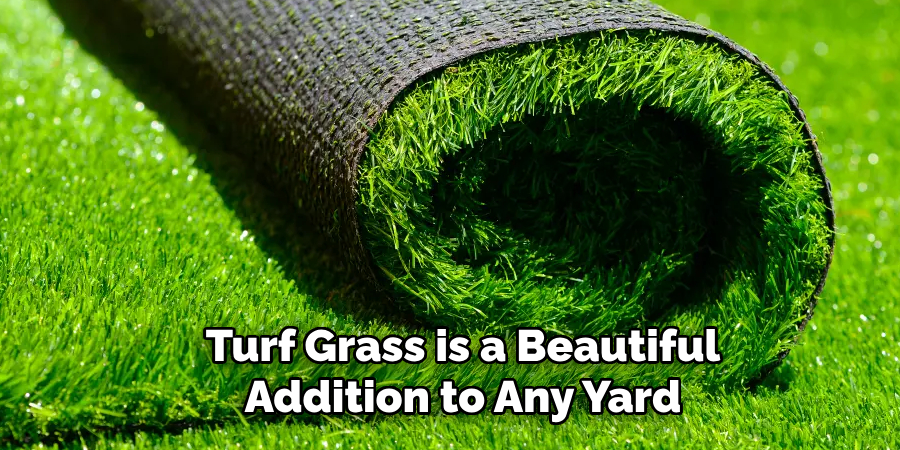
After calculating the requirements, it’s time to prepare the site. Clear any debris and level the ground for a smooth surface. Once the area is ready, you can start laying the sod or sowing the seeds. Make sure to follow the manufacturer’s instructions for proper installation.
Watering is crucial to establish the grass. Water the turf regularly, keeping the soil moist but not overly saturated. With proper care and maintenance, your turf grass will thrive and provide a lush, green landscape for years to come. Remember to regularly mow, fertilize, and address any pest or weed issues.
Watering Turf Grass Properly
Watering turf grass properly is essential for the health and appearance of your lawn. Understanding the watering needs will help you avoid common mistakes. Frequency and timing are key factors. Water the grass deeply but infrequently to encourage deep root growth.
Avoid overwatering, which can lead to shallow roots and disease. Also, avoid underwatering to prevent the grass from drying out. Monitor the moisture level by checking the soil regularly. Adjust your watering schedule based on weather conditions and the grass’s needs.
By following these guidelines, you can ensure your turf grass receives the right amount of water and stays vibrant and green throughout the year.
Mowing Techniques For Healthy Grass
Mowing techniques play a crucial role in maintaining healthy turf grass. The first step is selecting the right mower for your specific needs. It’s important to consider factors such as the size of your lawn and the type of grass you have.
Correct mowing height is another key aspect to keep in mind. Different types of grasses have different optimal heights, so make sure to research and adjust accordingly. Mowing frequency is equally important. Regular mowing helps prevent the grass from becoming too long and promotes healthy growth.
Lastly, proper clippings management is essential. Leaving clippings on the lawn can provide natural fertilization, but excessive clippings can lead to thatch buildup. Following these mowing techniques will help keep your turf grass in excellent condition.
Fertilizing To Promote Optimal Growth
Fertilizing turf grass is vital for promoting optimal growth. Understanding its nutrient requirements is essential. To begin, choose the right fertilizer carefully. Proper timing and application techniques are equally important for effective results. The nutrient content should match the grass’s needs and soil conditions.
Consider factors like nitrogen, phosphorus, and potassium levels when selecting a fertilizer. Apply it at the appropriate time for maximum benefits. The quantity should be evenly distributed and follow recommended rates to avoid over-application. By following these guidelines, you can ensure that your turf grass receives the necessary nutrients for healthy and lush growth.
Remember, proper fertilization is an integral part of maintaining a vibrant and thriving lawn.
Controlling Weeds, Pests, And Diseases
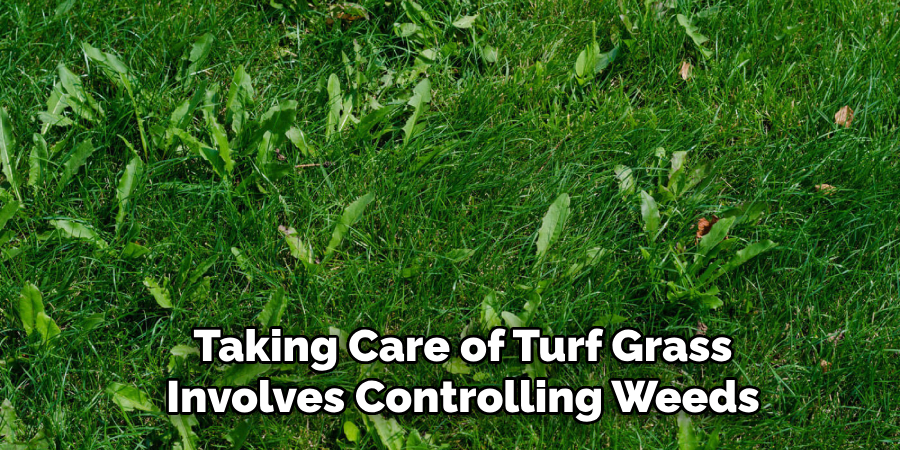
Taking care of turf grass involves controlling weeds, pests, and diseases. Identifying common weeds, pests, and diseases is essential. Preemptive measures should be taken to prevent their occurrence. Implement safe and effective control methods to combat these issues. Avoid commonly overused words and phrases when writing content.
Keep sentences brief and easy to understand, with a maximum of 20 words each. Use a variety of phrases at the beginning of paragraphs to maintain reader interest. Remember to write in an active voice and ensure the content is unique and plagiarism-free.
Lastly, refrain from including a conclusion paragraph and strive to pass ai writing detection by writing like a human.
Diagnosing The Problem
Diagnosing the problem is crucial when it comes to taking care of turf grass. By identifying the cause of damage, you can address the issue effectively. There are common types of turf grass damage that you need to be aware of.
It is important to adhere to these guidelines: keep your sentences brief and within a maximum of 20 words, make your writing seo friendly and unique. Additionally, use a variety of phrases at the beginning of paragraphs to maintain reader interest.
Remember to write in active voice and avoid starting with overused terms. Take care of your turf grass by understanding and addressing any damage it may face.
Remedial Actions For Damaged Grass
Remedial actions for damaged grass include reseeding or returfing. Aeration and dethatching help improve soil quality. Soil amendments and fertilization are vital for promoting recovery. Proper care practices, such as regular watering and mowing, also contribute to the grass’s health.
Regularly removing weeds and controlling pests can prevent further damage. Remember to avoid common mistakes like overwatering or compacting the soil. Taking care of turf grass requires patience and consistent effort. By following these guidelines, you can ensure a lush and healthy lawn for years to come.
Frequently Asked Questions For How To Take Care Of Turf Grass
How Often Should I Water My Turf Grass?
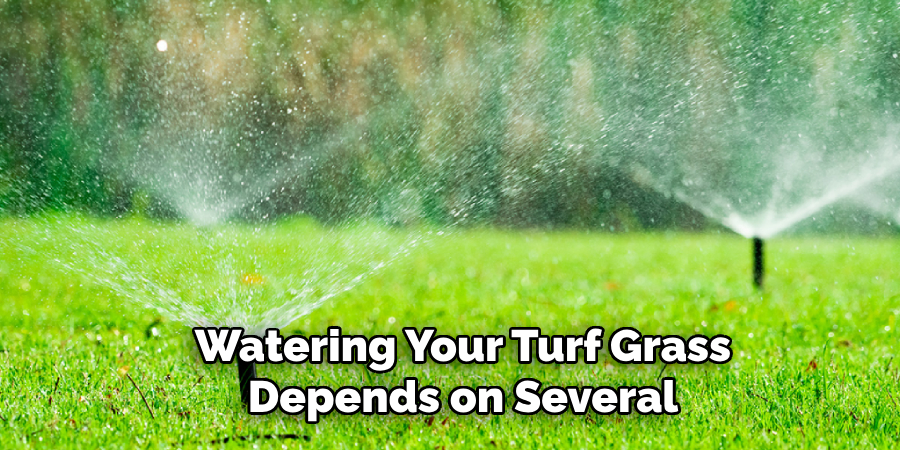
Watering your turf grass depends on several factors such as weather conditions, soil type, and grass variety. Generally, it is recommended to water deeply and infrequently. Aim for 1-1. 5 inches of water per week, divided into two or three watering sessions.
Sandy soils may require more frequent watering compared to clay soils.
What Is The Best Time Of Day To Water Turf Grass?
The best time to water your turf grass is early in the morning. Watering in the morning allows the grass to dry quickly, reducing the risk of disease. Avoid watering during the evening as the prolonged moisture can promote fungal growth.
Also, watering during the hottest part of the day may result in excessive evaporation.
How Can I Prevent Weeds From Invading My Turf Grass?
To prevent weeds from invading your turf grass, maintain a healthy lawn by regularly mowing, fertilizing, and watering it properly. Apply a pre-emergent herbicide in early spring to stop weed seeds from germinating. Spot-treat any weeds that appear with a selective herbicide.
It’s also important to fix bare or thin areas of your lawn to prevent weed growth.
When Should I Mow My Turf Grass?
The ideal mowing height for turf grass depends on the variety. Generally, cool-season grasses should be kept at a height of 2. 5 to 3. 5 inches, while warm-season grasses should be cut at a height of 1 to 2 inches.
Regularly mow your lawn when the grass has reached approximately one-third higher than the desired height.
How Do I Deal With Brown Patches In My Turf Grass?
Brown patches in turf grass can be caused by various factors such as disease, insect damage, or improper watering. Identify the underlying cause first. If it’s a disease, apply a fungicide according to the manufacturer’s instructions. For insect damage, treat the affected area with an appropriate insecticide.
Adjust your watering practices if it’s due to over or under-watering.
Should I Aerate My Turf Grass?
Aerating your turf grass can help improve its health and prevent compaction of the soil. It is recommended to aerate your lawn once a year during the growing season. This process involves creating small holes in the soil, allowing air, water, and nutrients to reach the grassroots.
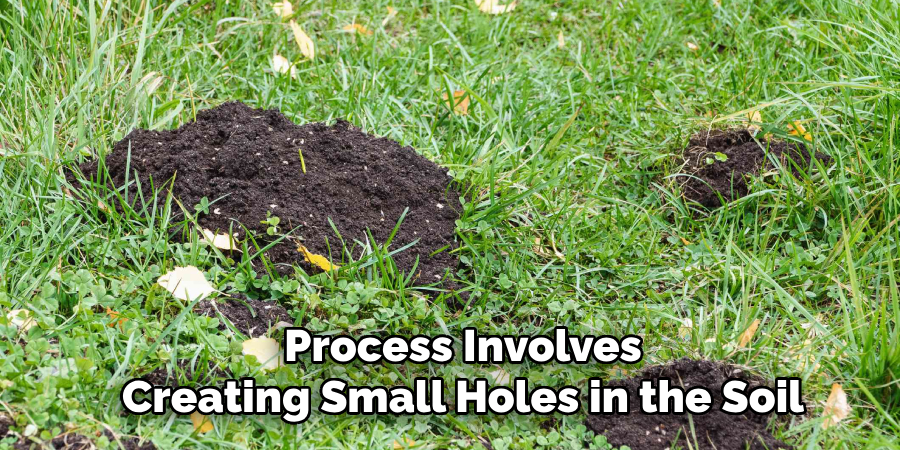
It is particularly beneficial for lawns with heavy foot traffic or clay soils.
Conclusion
It is evident that taking care of turf grass requires consistent effort and attention to detail. By following the proper steps, such as regular mowing, proper watering, and adequate fertilization, turf grass can thrive and provide a beautiful and healthy lawn.
Regular soil testing and ph adjustments are essential for maintaining the optimal conditions for turf grass growth. Additionally, addressing any issues such as weeds, pests, and diseases promptly can prevent further damage and ensure the longevity of the turf. It is also important to remember that each turf grass variety has specific care requirements, so it is crucial to choose the right type for your specific climate and soil conditions.
By incorporating these practices into your lawn care routine, you can achieve a lush and vibrant turf grass that enhances the beauty of your outdoor space.

